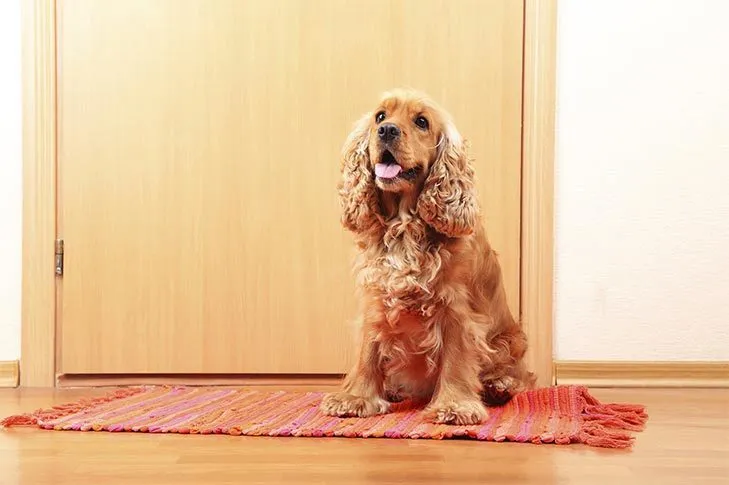Teaching your dog to communicate their needs effectively can dramatically improve household harmony and strengthen your bond. Among the most popular and simple methods for canine communication is Training A Dog To Use A Bell To Go Out. This technique empowers your furry friend to signal when they need a potty break or simply want to explore the outdoors, reducing accidents and frustration for both of you. Potty training can be one of the more challenging aspects of dog ownership, especially when your dog struggles with issues like when their dog will not go to the bathroom outside consistently. Bell training offers a clear, actionable solution to this common problem.
Choosing the Right Communication Tool
When you decide to empower your dog with a way to signal their outdoor needs, you have a few options to consider. The most straightforward and budget-friendly choice involves using bells that hang from a doorknob or are placed near the door. These are easy for dogs to nudge or paw, creating an audible signal. For those who want to ensure they hear the signal from any part of the house, there are modern doorbell systems with receivers that can be placed strategically around your home. The most technologically advanced option is using recordable talking buttons, a method popularized by speech-language pathologist Christina Hunger and her “Hunger4Words” social media accounts. These buttons allow dogs to “speak” specific words, offering a sophisticated level of communication. While talking buttons are innovative, bell training remains a highly effective and accessible starting point for teaching your dog to communicate their desire to go outside.
 An attentive English Cocker Spaniel patiently waits by a door, ready to use a bell for outdoor access.
An attentive English Cocker Spaniel patiently waits by a door, ready to use a bell for outdoor access.
Step-by-Step Guide to Bell Training Your Dog
The key to successfully training a dog to use a bell to go out lies in patient, consistent demonstration, allowing your dog to independently make the connection between ringing the bell and going outside. While luring with treats or using a “touch” cue can teach the physical action of ringing, our goal is to foster independent communication.
Step 1: Introduce the Bell and Build Positive Association
Begin by introducing the bell or button to your dog. Let them sniff, inspect, and explore it without pressure. Reward any curiosity or engagement with praise and a small treat. The aim is for your dog to view the bell as a neutral or positive object, not something to be feared or ignored. This initial positive reinforcement is crucial for laying the groundwork for future training.
Step 2: Consistent Demonstration Before Each Potty Break
Place the bell or button prominently near the door your dog uses most often for potty breaks. Every single time you take your dog out, gently press the button or ring the bell yourself. Do this consistently before opening the door to go outside. This consistent repetition helps them build the association between the bell and going outside. If you’ve ever dealt with a dog who frequently needs to relieve themselves and struggles with communication, you might find similarities with a dog experiencing separation issues, or one who tries to escape from their enclosure, such as when my dog gets out of his crate due to urgency. The more consistent you are, the faster your dog will make the crucial connection.
Step 3: Reinforce Independent Bell Ringing
Dogs are astute observers. After watching you ring the bell repeatedly before exiting, your dog will eventually understand that the bell is a signal for outdoor access. Continue this routine until your dog starts to ring the bell on their own, without any cue from you. The moment they ring the bell independently, respond with enthusiastic praise and immediately take them outside, even if it’s just for a very brief trip. This instant gratification reinforces the behavior. As your dog starts to grasp this concept, you might notice other positive behavioral changes. For instance, a dog who can communicate effectively is often less likely to engage in disruptive behaviors like excessive how to keep a dog from barking out of frustration.
 A patient French Bulldog sits by the door with a leash, demonstrating readiness for a walk after successfully learning to signal.
A patient French Bulldog sits by the door with a leash, demonstrating readiness for a walk after successfully learning to signal.
The Benefits of a Shared Language
Most dogs quickly grasp the concept of ringing a bell or pushing a button to signal their need to go outside. This shared language between you and your dog can significantly decrease frustration in the home by eliminating guesswork about their needs. It deepens your bond and allows for clear communication, enhancing mutual understanding. This clearer communication can also alleviate stress for your pet, especially if they show signs of how to train anxiety out of a dog when unable to express their needs.
Beyond your immediate family, a bell system allows your dog to communicate their core needs with other people in your home, such as guests or pet sitters, who might not be as attuned to your dog’s subtle natural signals. This shared language is particularly beneficial for dogs who might otherwise express their urgent need to go out through undesirable behaviors, such as scratching at the door, having accidents indoors, or even trying to break free, similar to when my dog breaks out of his crate if left alone and desperate. It provides them with a polite and clear way to make their request known, fostering a more harmonious environment for everyone.
Conclusion
Mastering training a dog to use a bell to go out is a straightforward yet powerful way to improve communication and harmony in your home. By patiently demonstrating the connection between the bell and outdoor access, and consistently rewarding their independent efforts, you empower your dog to effectively communicate their needs. This simple tool can lead to fewer accidents, reduced frustration, and a stronger, more trusting relationship between you and your canine companion. Start your bell training journey today and unlock a new level of understanding with your dog!
References
- Hunger, Christina. How Stella Learned to Talk: The Groundbreaking Story of the World’s First Talking Dog. William Morrow, 2021.
- The American Kennel Club. “The Power of Touch: Teach Your Dog to Nose Target.” AKC.org.
